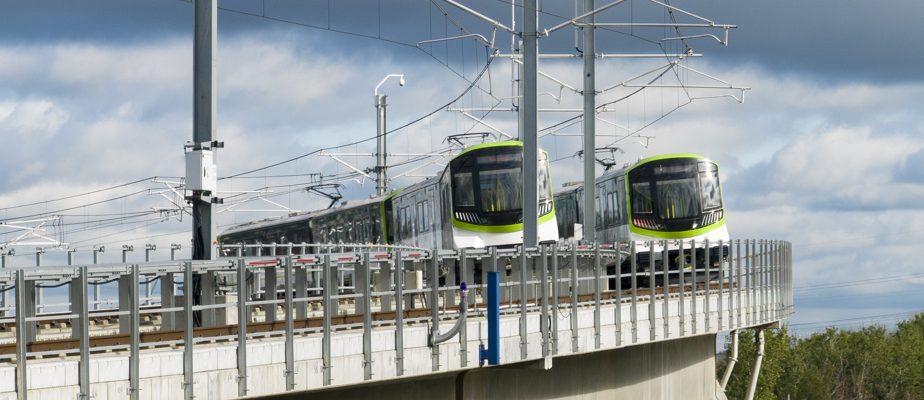The emergency protocol of the Réseau express métropolitain (REM) will be “tightened” in order to prevent other laborious evacuations from happening again in the event of a breakdown in the future, assures the Minister of Transport, Geneviève Guilbault.
“This situation is unacceptable. User safety must always come first. […] We are assured that the security protocol will be tightened and that links will be made with the emergency services,” Ms.me Guilbault, through his office.
She was reacting to revelations from The Presswhich reported earlier that paramedics took around 25 minutes to assist a woman who had fallen ill on a REM train, even though it had remained immobilized between two stations for more than two hours.

PHOTO JACQUES BOISSINOT, CANADIAN PRESS ARCHIVES
Geneviève Guilbault
It all happened last Monday at the end of the day, near the Panama station in Brossard. As it was not possible to bring the train back to the station, the paramedics had to evacuate the lady from the train, but the intervention was delayed by the lack of information and communication with the CDPQ Infra team, the subsidiary of the Caisse de dépôt which owns the REM.
Mme Guilbault also says he met the REM teams “the day after the event to take stock of this subject”.
In response to our questions, CDPQ Infra also specified by email that it had recently “required from its partners Alstom and AtkinsRéalis a corrected plan to better ensure the quality of operations and significantly improve incident management”.
Safety first
In the opposition, however, it is very difficult to explain why these adjustments were not made before the launch of the REM in July. “User safety is paramount. Waiting 25 minutes for emergency services is unacceptable. CDPQ Infra must review its protocols and work jointly with emergency services,” bluntly states liberal transport critic André A. Morin.
He also calls on Minister Guilbault to “take responsibility and demand changes quickly”.
At Québec solidaire, the transport spokesperson, Etienne Grandmont, affirms that “public confidence is at stake”. “The REM’s objective must be to offer a fast, reliable and safe transportation service. We hope that CDPQ Infra will not cut corners on the security aspect to achieve its financial objectives and that its emergency plan is up to par,” he judges.
For its part, the Parti Québécois had not yet answered our questions at the time of publication.
Thomas, a user who was present during the event and who called 911, hopes to see changes quickly. “If it had been a more serious problem or someone who needed immediate intervention, what would we have done? There was really preparation that wasn’t there, and as a user, that’s not reassuring,” he said.
In the public transport and ambulance community, this event also raised several concerns. “It’s annoying because it was predictable. It was written in the sky. In prolonged outages, especially between stations, we know that there will be people who will panic more than others. “It can create very anxiety-provoking situations and we have to manage them,” explained the director of Trajectoire Québec, Sarah V. Doyon, for example.
“What we need is faster confirmation and the establishment of an effective process on the REM side to be able to have the green light,” argued Renaud Pilon, spokesperson for the REM. Cooperative of ambulance technicians of Montérégie (CETAM).
